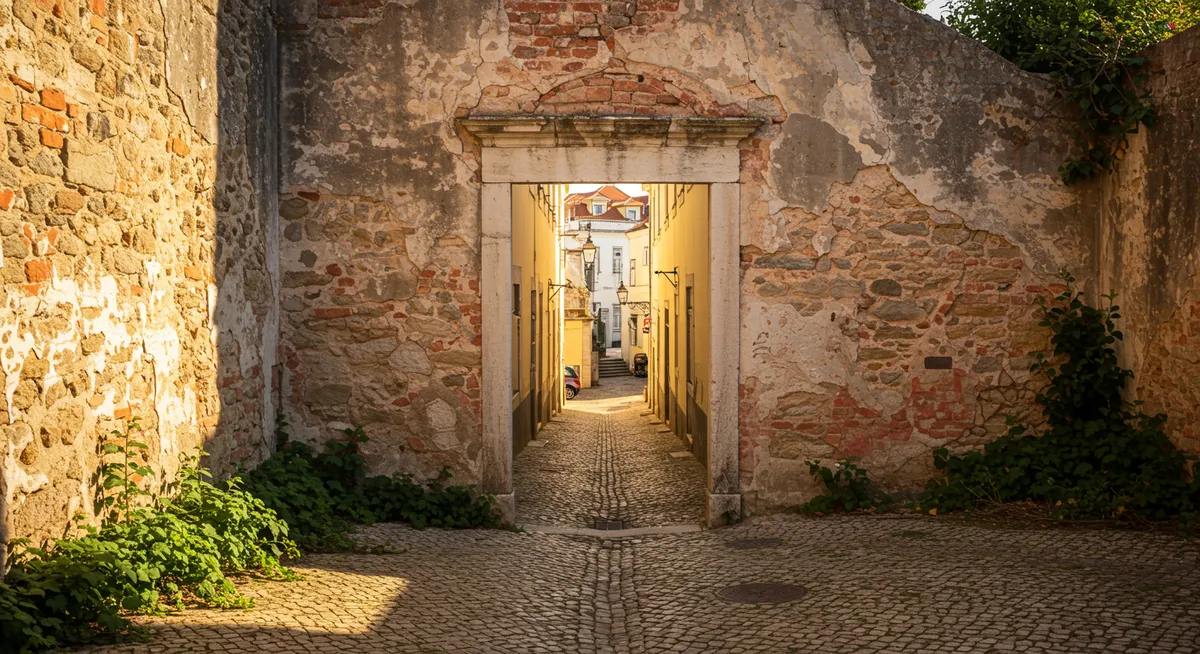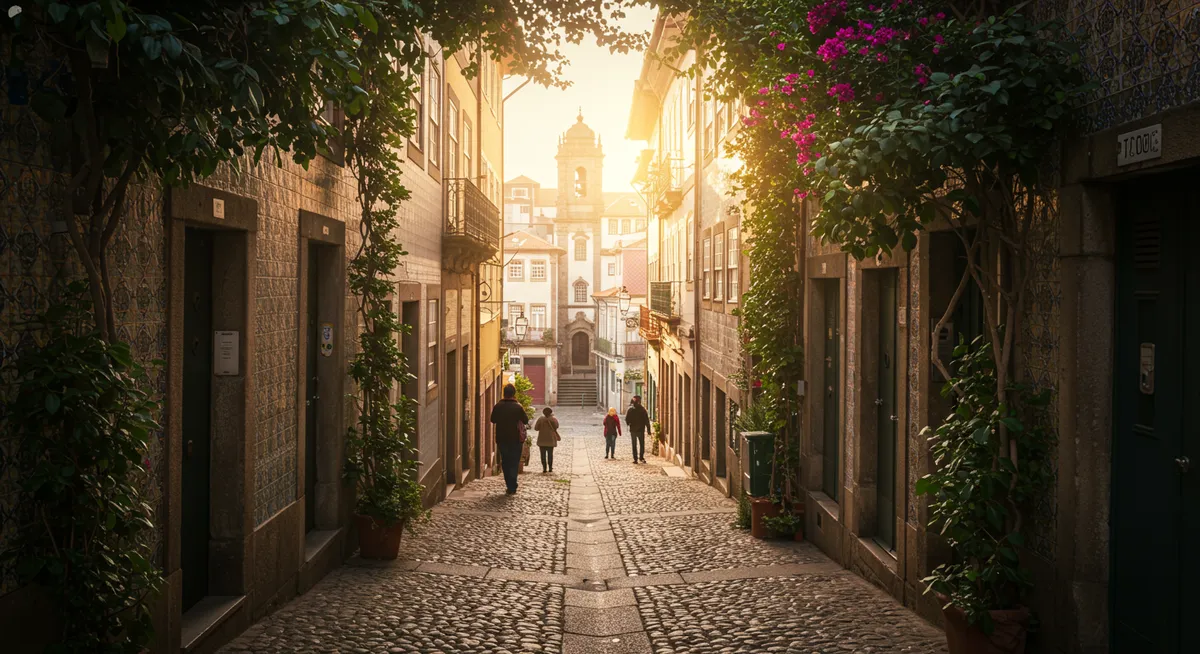
Hidden Historical Sites to Explore in Lisbon
Want to plan a trip based on this article? Chat with our AI travel assistant!
Chat with AI AssistantCategory: hidden-historical-sites-to-explore-in-lisbon
About the Author
Travel Expert & Content Creator
Our travel experts have visited hundreds of destinations worldwide and are passionate about sharing authentic, practical travel advice. With years of experience in travel planning and content creation, we help travelers make informed decisions and create unforgettable journeys.
Editorial Standards: All articles are reviewed for accuracy and quality before publication. Learn more about our editorial process.
Written by Editor | Last updated: 7/6/2025
Unveiling Lisbon's Secret Past: Hidden Historical Gems
Having explored Lisbon extensively over many years, I've always been drawn to its layers of history, much of which lies hidden just beyond the famous landmarks. While the Jerónimos Monastery and Belém Tower are undoubtedly magnificent, the true essence of the city often resides in its quieter, less-trodden historical sites. These concealed gems offer a more intimate connection to Lisbon's past, revealing fascinating narratives that many tourists miss. Prepare to delve into the secrets of Portugal's vibrant capital, uncovering places where history whispers from every cobblestone and tile.
Núcleo Arqueológico da Rua dos Correeiros: Roman Lisbon Beneath Your Feet
Beneath the bustling streets of Baixa, specifically under a bank building on Rua dos Correeiros, lies one of Lisbon's most extraordinary hidden historical sites: the Núcleo Arqueológico. This incredible archaeological core unveils well-preserved Roman fish-salting tanks, mosaics, and foundations dating back to the 1st century AD. It’s a remarkable glimpse into Olisipo, as Lisbon was known during Roman times, showcasing the city’s ancient commercial vibrancy. Visiting this underground complex truly highlights the deep historical layers beneath modern Lisbon. My top tip is to book a guided tour; the expert explanations genuinely bring this hidden Roman past to life, offering context you'd otherwise miss. It's an often-overlooked testament to the city’s enduring legacy and a stark contrast to the modern cityscape above.
Palácio dos Marqueses de Fronteira: A Palace of Azulejos and Grandeur
Tucked away in the Benfica district, the Palácio dos Marqueses de Fronteira is an exquisite 17th-century palace that remains a private residence, yet opens parts of its magnificent gardens and some rooms to the public. This hidden historical site is a wonderland of 'azulejos' (traditional Portuguese tiles), particularly in its breathtaking Battle of the Birds Terrace and the stunning tiled gardens. The intricate blue and white panels depict mythical scenes, historical events, and allegories, providing a vibrant, visual narrative of Portugal's golden age. As a travel expert, I recommend allowing ample time to simply wander and absorb the tranquility; it feels like stepping into a living museum, far removed from central Lisbon's crowds. It offers a unique insight into aristocratic life and artistic expression.
Cemitério dos Prazeres: A City of the Dead with Stunning Views
While a cemetery might not be the first place you think of for historical exploration, Lisbon's Cemitério dos Prazeres offers a profoundly atmospheric and historically rich experience. Perched atop a hill, this 19th-century necropolis provides panoramic views over the city, the 25 de Abril Bridge, and the Tagus River. More importantly, it’s a veritable open-air museum of funerary art, featuring elaborate mausoleums that are often miniature palaces, reflecting the wealth and status of Lisbon’s prominent families. Many notable Portuguese figures, including artists, writers, and politicians, are interred here. Exploring this quiet, reflective space reveals fascinating stories and architectural marvels. Take a leisurely stroll through its tree-lined avenues to discover the intricate details of this poignant hidden historical site, which feels like a grand, quiet park.
Convento do Carmo Archaeological Museum: A Ruined Beauty
Though physically prominent, the Convento do Carmo and its attached Archaeological Museum often get overshadowed by other central Lisbon attractions. This majestic Gothic church was famously destroyed during the 1755 earthquake, and its roofless nave stands as a poignant reminder of that devastating event. Exploring the ruins, with the sky as its ceiling, offers a unique historical perspective on Lisbon’s resilience. The museum houses a fascinating collection ranging from prehistoric artifacts to Roman tombs and even two Peruvian mummies. It's one of those hidden historical sites where the structure itself tells a dramatic story. Remember to look for the small exhibition detailing the earthquake’s impact; it truly adds depth to your visit and enriches your understanding of the city's past.
Igreja de São Roque and Museum of Sacred Art: Unassuming Opulence
From its relatively plain façade, you might walk past the Igreja de São Roque without a second glance. However, stepping inside reveals an astonishing display of Baroque and Mannerist art, making it one of Lisbon's most unexpected hidden historical sites. What truly sets it apart is the Chapel of St. John the Baptist, constructed in Rome from precious materials and then meticulously shipped to Lisbon in the 18th century – a testament to incredible craftsmanship and wealth. Adjacent to the church, the Museum of Sacred Art offers further insights into its treasures. This gem showcases an opulence that surprises many visitors, proving that some of the most profound historical experiences are found behind the most modest exteriors. It's a must-see for anyone interested in intricate religious art.
Frequently Asked Questions
Are these hidden historical sites in Lisbon easily accessible?
What is the best time to visit these hidden historical sites?
Do I need to book tickets in advance for these sites?
Lisbon’s charm lies not just in its famous landmarks, but equally in its compelling collection of hidden historical sites. By venturing beyond the well-trodden path, you uncover layers of fascinating narratives, from ancient Roman settlements to opulent palaces and poignant earthquake ruins. These lesser-known places offer a deeper, more personal connection to the city's rich heritage, providing unique insights that truly enhance your travel experience. Don't just see Lisbon; truly explore its past. For more ideas on how to craft your perfect Lisbon adventure, consider exploring our comprehensive guide on things to do in Lisbon and other city insights.
Content Quality Assurance
This article has been thoroughly researched and fact-checked by our editorial team. We maintain high standards for accuracy and originality in all our content.
Related Articles

Funchal's Hidden Gems & Secret Spots Uncovered
Discover Funchal's hidden gems and secret spots, from tranquil gardens to authentic tascas. Uncover off-the-beaten-path viewpoints and unique cultural sites for an unforgettable trip.

Hidden Gems & Secret Spots in Porto, Portugal
Discover Porto's hidden gems and secret spots for an authentic 2024 experience. Uncover local haunts, charming alleys, and tranquil escapes away from the crowds.

Cascais Hidden Gems: Secret Spots to Explore in Portugal
Discover Cascais' hidden gems and secret spots for an unforgettable Portugal adventure. Explore secluded beaches, charming local eateries, and historical treasures off the beaten path.